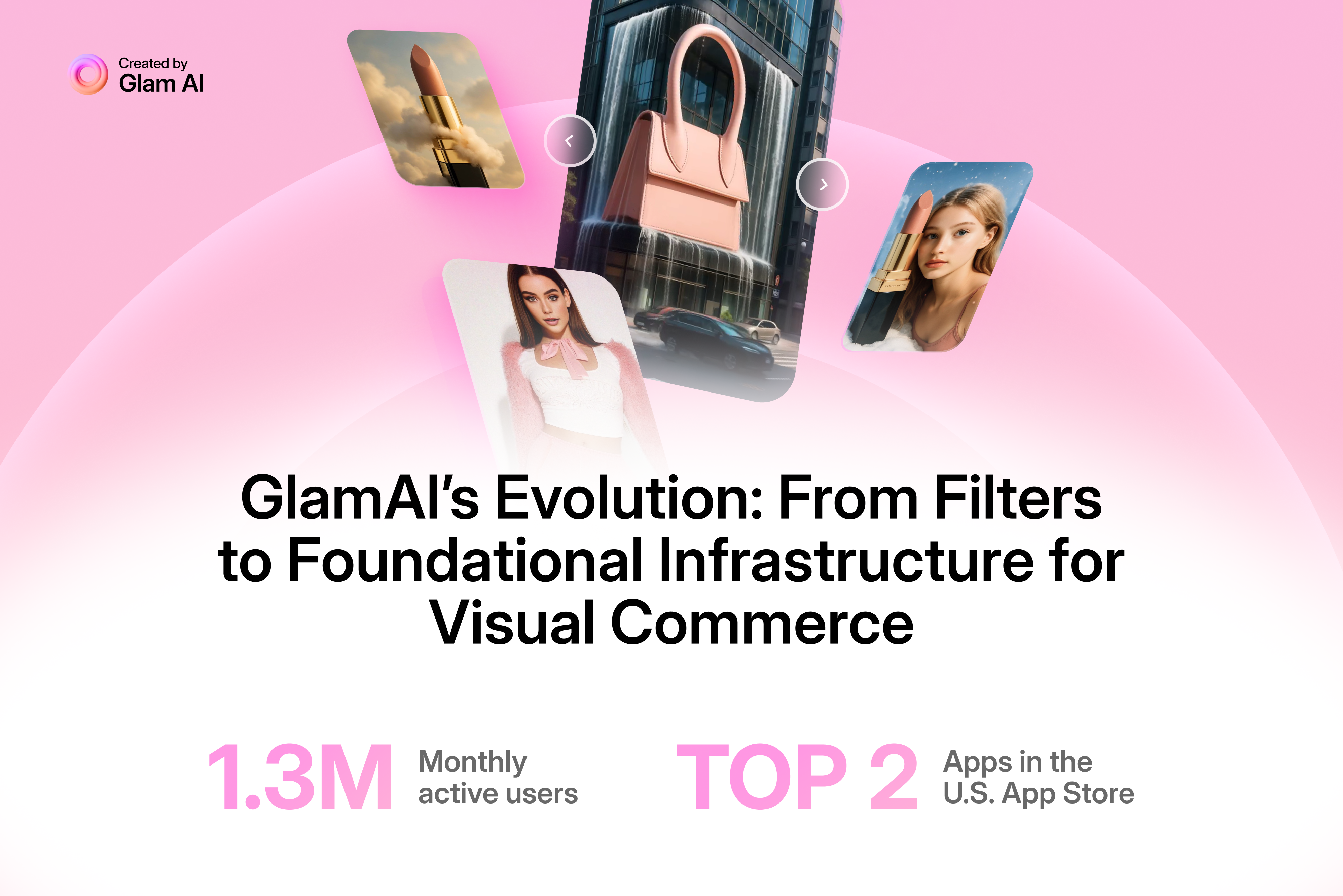In the crowded landscape of AI startups, a few companies are doing more than chasing hype – they’re quietly building the infrastructure of the next generation of commerce.
GlamAI is one of them.
What began in early 2024 as a viral B2C filter app is now a cross-industry creative engine – used by over 1.3 million monthly active users, ranked in the top 2 apps in the U.S. App Store, and powering both consumer experiences and B2B content creation.
But GlamAI didn’t follow a typical enterprise roadmap. It didn’t launch with a 12-month sales cycle or a pitch deck full of hypotheticals. It launched with filters, moved fast, studied real behavior, and scaled through relentless iteration.
Now it’s positioned as one of the fastest-growing AI platforms in visual commerce – built by a small team with a big focus: helping people create better, faster, and smarter.
A Founder-Led Approach to Real-World AI
Founded by Paul Shaburov, a 25-year-old entrepreneur with a background in applied mathematics and product strategy, GlamAI was born out of a belief that the best AI products don’t need to be explained – they just need to be used.
“We didn’t build GlamAI just for fashion. We built it to empower people – businesses and creators alike – with tools that feel simple, fast, and powerful.”
- Paul Shaburov, Founder of GlamAI
This principle shows up in the platform’s core design:
- Visual results in seconds
- No-code tools for instant publishing
- AI stylizers that adapt to business categories
- Content output optimized for mobile, ecommerce, and social media
GlamAI isn’t a demo tool. It’s a workhorse – designed for the creator economy, performance marketers, and retail teams who need results, not renderings.
From Filters to Full Stack: The Platform Today
While the app first gained popularity through AI filters and viral selfie effects, GlamAI now delivers a full creative stack for visual content generation:
- Photo Stylizers and Branded Effects
Still a cornerstone of the platform, these AI-powered filters help users instantly transform content with professional-grade enhancements – mapped to facial features, lighting, or background.
- Virtual Try-On Engine
Used by creators and ecommerce teams, this tool allows users to preview products (makeup, fashion, accessories) on real people – in real time – improving both engagement and conversion.
- Product Demonstration Tools
GlamAI enables brands to visualize physical products (from lipstick to phone cases to jewelry) using AI overlays – without requiring 3D modeling or studio production.
- Content Automation for Marketers
With built-in formatting for Instagram, TikTok, Shopify, and ad platforms, GlamAI helps teams generate campaign visuals in seconds – and test variations on the fly.
- In-Progress: Video and Real-Time Adaptors
Now building on top of foundational models, GlamAI is expanding into photo-to-video, adaptive visual content, and white-label SDKs that let partners integrate real-time styling and personalization into their own apps.
Key Stats That Define Growth
- Launched in June 2024 after rapid prototyping and GenAI trend research
- Profitable within 6 months, with early monetization through premium tools
- 5.3M+ total downloads
- 1.3M monthly active users (MAUs)
- #2 ranking in U.S. App Store, #1 in Australia (April 2025)
- $2.5M+ monthly recurring revenue (MRR)
These aren’t vanity metrics. They’re signals of:
- Product-market fit
- Business model validation
- Consumer + business crossover success
- Scalable AI infrastructure being used at real-world velocity
Why GlamAI Works: The Product-Led Growth Loop
GlamAI’s rise wasn’t driven by paid acquisition or enterprise pilots. It was built through product-led growth – accelerated by behavior, not budget.
The team runs dozens of A/B tests daily, studying:
- Filter usage by category
- Content save/share behavior
- Conversion from stylizer to export
- In-app monetization triggers
- Emerging user use cases
Every product decision is data-driven and user-validated – which explains how GlamAI expanded from a filter app into a B2B visual stack in under 12 months.
This kind of growth loop isn’t easy to fake – and it’s incredibly hard to catch up with.
Who Uses GlamAI Today?
Consumers use it for self-expression and try-ons.
Creators use it for branded content and monetization.
Marketers use it for campaign visuals and ad testing.
Retailers use it to reduce returns and increase conversions.
Examples from verified users:
- A beauty brand creates lipstick demos with no studio required
- A chef enhances food visuals with stylized filters
- A gemologist showcases products without compromising detail
- A content studio produces campaign-ready assets in hours, not weeks
Whether it’s a solo creator or a growing product team, GlamAI supports creative output at commercial quality – without the usual production bottlenecks.
Where It’s Headed
With deep usage data, a profitable model, and growing B2B traction, GlamAI is now building toward:
- Real-time photo-to-video try-ons
- Generative video storytelling
- White-label integrations and brand SDKs
- Retail-focused visualization APIs
- Enterprise use cases in ecommerce, beauty, wellness, and lifestyle
The goal? To become the visual infrastructure layer for commerce, content, and creator economies – much like Stripe did for payments, or Canva did for lightweight design.
Why This Matters: Beyond AI Hype
GlamAI’s success shows what happens when:
- AI tools are grounded in real use cases
- Growth comes from UX, not ad budgets
- Consumer traction informs enterprise evolution
- Infrastructure is built for scale, not speculation
As more companies look to integrate generative AI into their workflows, the demand for usable, creator-grade, and marketer-ready tools is only increasing.
GlamAI delivers – now.
“We want AI creation to feel like flipping a switch – not launching a project.”
- Paul Shaburov
Final Word: A Company to Watch
GlamAI isn’t trying to reinvent the wheel. It’s quietly becoming the engine inside it.
With 1.3M users, real revenue, and a team that ships at the speed of culture, it’s no surprise that enterprise innovation teams and potential acquirers are taking notice.
The next phase of commerce is visual, interactive, and AI-powered – and GlamAI is already building it.

